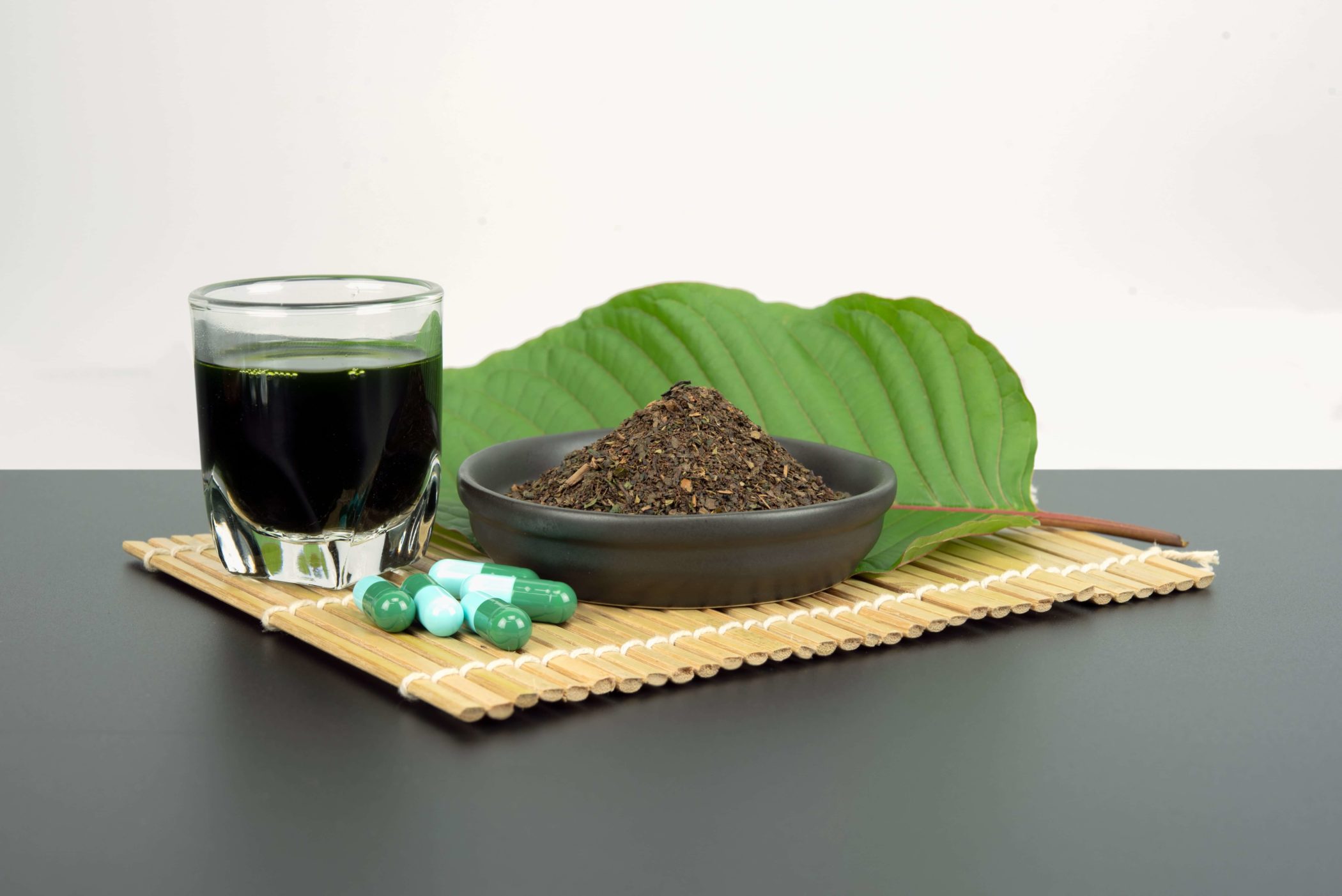Kratom is an herbal supplement that some claim could be an alternative to opioids. People in Southeast Asia started consuming the kratom plant starting in the 19th century. Kratom was ingested by chewing the fresh or dried leaves of the tree or brewing them in tea. The plant was believed to help people work longer hours and feel less tired.
The world has turned its attention to the substance recently, with the World Health Organization (WHO) possibly making a judgment on the health effects of kratom soon. Currently, kratom is illegal in six states — Alabama, Arkansas, Indiana, Rhode Island, Vermont, and Wisconsin — and Washington D.C. Other states, such as Arizona and Utah, regulate the substance via a variety of laws.
Kratom may also be sold under the name thang, kakuam, thom, ketum and biak.
What is Kratom?
The leaves of the Mitragyna speciosa, an evergreen tropical tree native to Southeast Asia, contain compounds that can have narcotic-like effects. Kratom can be smoked or consumed in a liquid form or swallowed in a capsule. According to the National Institute on Drug Abuse (NIDA), sometimes kratom is found in the form of a green powder or as an extract or gum.
The mind-altering results of consuming kratom include decreased pain, increased pleasure, and sedation. These effects result from two compounds found in kratom, mitragynine and 7-α-hydroxymitragynine. Both compounds interact with the brain’s opioid receptors. Kratom can also act as a stimulant because of mitragynine, which interacts with some of the brain’s other receptor systems. In a small amount, someone may experience increased energy, sociability, and alertness when taking kratom.
Kratom typically takes effect within five to 10 minutes after it has been ingested. The effects of kratom will last between two and five hours. The more kratom a person takes, the stronger the effects.
Side Effects of Kratom
Many people think that because kratom is natural, it is also safe. However, research has not yet proven that kratom is safe or beneficial.
The Food and Drug Administration (FDA) does not regulate supplements, including kratom, so there is no guarantee items sold as kratom include the ingredients listed on the label.
Those who support the use of kratom view it as a possible alternative to opioids. However, there are some potentially serious side effects from taking the substance. Users have reported the following health effects from taking kratom:
- nausea and vomiting
- itching
- sweating
- dry mouth
- constipation
- increased urination
- loss of appetite
- weight loss
- chills
- muscle pain
- liver damage
- hallucinations and delusions
- psychosis
- dizziness
- drowsiness
- depression
- breathing suppression
- seizures, coma, and death
Because kratom produces opioid-like feelings, it can also cause dependence, if not addiction. Users have reported physical withdrawal symptoms, including muscle aches, insomnia, irritability, hostility, aggression, and emotional changes, when they stop taking kratom.
There have been a few deaths associated with people taking kratom. However, those appear to be connected to kratom that has been altered with other substances, including illicit drugs like opioids or benzodiazepines.
Problems with Kratom
There are multiple reasons why someone should be wary of taking kratom. These include:
- The substance may not be legal in their state. It is illegal in Indiana.
- The studies conducted on the drug have not shown any medical benefit from kratom.
- There is currently no control or oversight on how kratom is grown or processed.
There is currently no regulation regarding how companies selling kratom package or label their products. Lack of regulation makes any kratom products highly unreliable.
For instance, the FDA had a mandatory recall of products containing kratom in 2018 due to potential Salmonella contamination. An analysis in 2019 found traces of heavy metals, including lead, in 30 different products containing kratom. As a result, the Drug Enforcement Administration (DEA) wants to classify kratom as a Schedule 1 controlled substance.
Long-term users in Thailand have been shown to have several unusual side effects from taking high doses of kratom that include hyperpigmentation, or darkening of skin, anorexia and weight loss, and psychosis.
It has been estimated that about 15,000 people in the United States, or 0.08% of the population, use kratom.
Kratom Withdrawal and Addiction Treatment
Signs someone is taking and/or abusing kratom can include:
- talkativeness
- increased social behavior
- itching
- changes in appetite
- sweating
- mood swings
- unusual changes in behavior, appearance, and overall health
Because of the relatively new arrival of kratom in the United States, there is no specific treatment for dependence or addiction to the substance. Some studies have suggested that similar care used in handling opioid withdrawal and treatment can effectively manage kratom withdrawal.
Due to the uncertainty surrounding kratom, it is recommended that someone wishing to stop using the substance seek medical help for detoxing from kratom. This way medical professionals can monitor the person during withdrawal to help manage symptoms and ensure their health and overall safety.
Ongoing support in the form of behavioral therapy and peer groups may also offer help for long-term recovery.
At Bridges of Hope, our treatment philosophy is based on a comprehensive and integrated approach to addressing all issues related to substance use and mental health disorders. Utilizing therapeutically proven, evidence-based clinical practices, we provide superior client care in Indiana through all-inclusive treatment services.


 Verify Insurance
Verify Insurance
 Toll Free Call
Toll Free Call